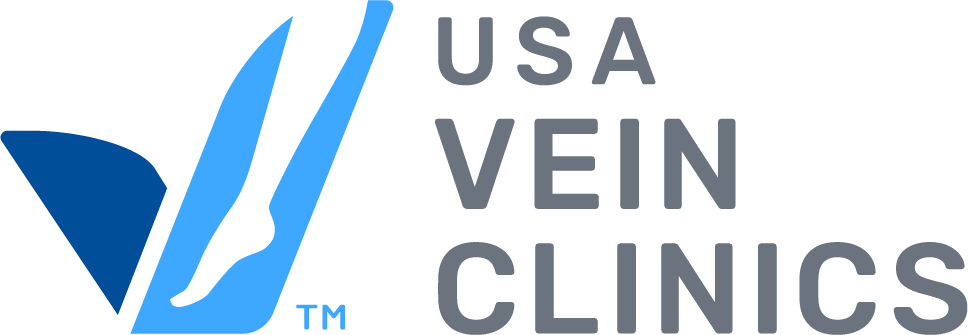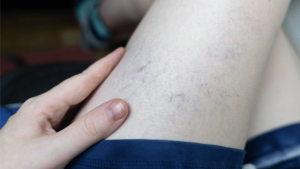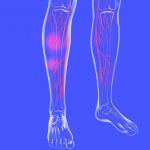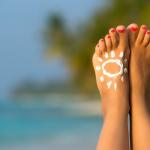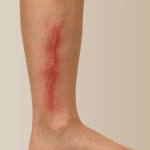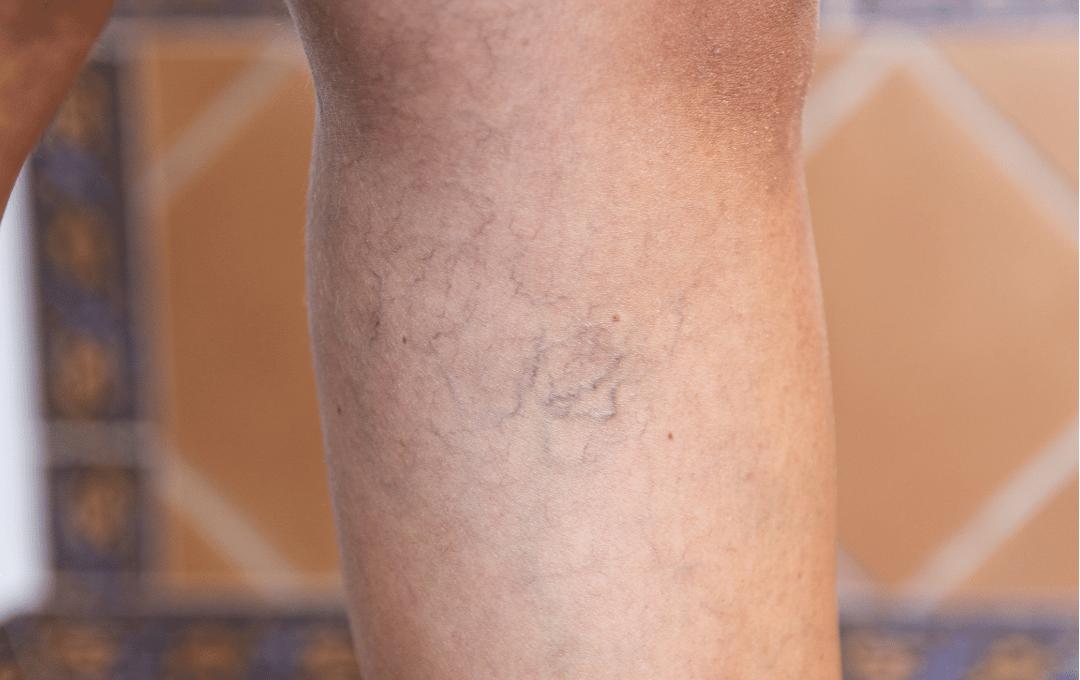
Spider veins are thin, small, web-like veins that appear just beneath the skin’s surface. They form when increased pressure in the veins weakens vein walls or damages vein valves due to various factors like genetics, hormonal changes, obesity, or prolonged standing and sitting.
While often considered cosmetic, spider veins may indicate underlying vein issues, such as venous insufficiency. If you notice spider veins that don’t fade on their own or are spreading, schedule a consultation with a vein specialist to assess your symptoms and determine the best treatment. With an early evaluation, more options, including non-surgical treatments, become available to alleviate painful and uncomfortable symptoms.
What Causes Spider Veins on the Legs?
Spider veins are usually found on the legs due to the pressure that leg veins endure throughout daily activities. When it comes to common causes of spider veins in the legs, some are preventable, while others are not.
Some common causes of spider veins in the legs include:
Prolonged Standing or Sitting
Those who work jobs that involve sitting or standing for long hours put extra strain and pressure on the leg veins, increasing the risk of developing spider veins. One way to help decrease pressure is by taking breaks when working, as well as elevating legs at the end of the day to promote healthy circulation.
Genetics
Individuals with a family history of spider veins and vein disease are more likely to develop these conditions themselves. Reviewing your family’s health history and consulting a vein specialist when early symptoms appear can help manage potential vein issues in these cases.
Aging
Another possible factor that can impact the growth of spider veins is aging. As you age, veins naturally grow weaker, and the breakdown of the vein structure makes it easier for vein disease to develop.
Hormonal Shifts
Hormones can influence the development of spider veins, especially during pregnancy. This is because hormones can relax the veins, allowing blood to pool in the legs instead of circulating back to the heart.
Obesity or Excess Weight
Someone who is obese or overweight is more likely to have spider veins due to the added pressure on the legs from the extra weight. Maintaining a healthy lifestyle through a balanced diet and regular exercise can help mitigate these risks.
Certain Medications
In some cases, there are certain medications, like hormonal therapy or birth control, that can impact vein function. If you notice any potential symptoms of spider veins after starting a new medication, talk to your doctor about how to best adjust your treatment.
Sedentary Lifestyle
Aside from working a job that involves sitting for prolonged periods, spending most of the day sitting and not exercising regularly can increase the likelihood of spider vein development in the legs.
In some cases, spider veins on the legs may indicate chronic venous insufficiency (CVI), a progressive condition caused by impaired vein function. Chronic venous insufficiency often begins with spider veins or varicose veins and can lead to swelling, skin changes, and leg ulcers if left untreated.
Causes of Spider Veins vs. Varicose Veins
Spider veins and varicose veins are both caused by weakened or damaged veins in the legs. Although the causes of spider veins and varicose veins are similar, they differ in size, appearance, and severity.
Spider veins are small, colored veins (red, purple, or blue) that measure less than 1mm in diameter and usually do not cause pain.
In comparison, varicose veins are larger, twisted veins that bulge close to the skin’s surface, particularly on the legs, ankles, and feet. They often appear blue or purple, and usually measure around 3mm or more in diameter. Some common symptoms of varicose veins include swelling, cramping, heaviness, itching, and burning in the affected area.
Understanding the common varicose and spider veins causes can help individuals take proactive steps towards their long-term health.
When Are Spider Veins More Than Cosmetic?
In many cases, spider veins can be harmless; however, when they are accompanied by symptoms such as aching, heaviness, swelling, or itching sensations, they may indicate vein disease.
Vein disease is a broad term describing difficulty in returning blood to the heart. Chronic venous insufficiency (CVI), which can lead to spider veins, is a type of vein disease characterized by malfunctioning vein valves that cause blood to pool in the legs.
This damage can result in visible symptoms, such as:
- Leg pain or aching
- Heaviness or fatigue in the legs
- Persistent swelling
- Itching or burning near the veins
- Twisted, bulging veins
If untreated, CVI can progress to more serious complications, including or painful ulcers.
When to Seek Treatment for Spider Veins
If spider veins are painful, worsening, or interfering with daily life, it may be time to seek medical treatment. Beyond cosmetic improvement, vein treatment can relieve symptoms and address underlying disease. In fact, many procedures are covered by insurance when vein disease is diagnosed.
USA Vein Clinics specializes in non-surgical treatments for spider veins that appear in the legs. When visiting one of our nationwide clinics, our vein specialists may recommend sclerotherapy as a treatment option.
During sclerotherapy, a sclerosant is injected into the affected veins, causing them to collapse and fade over time. Sclerotherapy can be performed both visually and using ultrasound guidance.
This treatment requires minimal downtime, is performed on an outpatient basis, and leaves no scars. Our vein specialists will help determine the best type of sclerotherapy for each patient to achieve long-lasting symptom relief.
Learn More About Sclerotherapy
How to Reduce Your Risk of Spider Veins
Along with wondering what causes spider veins, many people also want to know how to prevent them from developing. While not all spider veins are preventable, adopting healthy habits supports better circulation and may reduce the risk of developing spider veins.
Some healthy habits that can decrease the risk of vein issues include:
- Avoid sitting or standing in one place for too long by taking short walks or stretching breaks.
- Exercise regularly, for at least 30 minutes a day, five times a week.
- Maintain a healthy weight to help lower pressure on the leg veins.
- Eat nutrient-rich foods and limit sodium, sugar, and alcohol intake to support overall circulation.
- Stay hydrated to help blood flow more easily and reduce vein strain.
- Protect skin with protective clothing and sunscreen to prevent sun damage.
- Wear compression socks to help improve blood flow in the legs.
- Avoid smoking, as it harms circulation and increases the risk of vein disease.
Along with these lifestyle habits, it’s best to consult a vein specialist for a vein health screening and personalized advice on managing spider veins.
Get Relief and Answers from a Vein Specialist
If you’re unsure whether your spider veins are simply cosmetic or linked to a deeper issue, schedule a consultation with USA Vein Clinics today. Early care not only relieves discomfort but also prevents vein disease from progressing.
Our experienced specialists have successfully treated thousands of patients with spider and varicose veins using advanced, minimally invasive procedures. Our commitment to superior patient care has earned recognition for our treatment centers from the Intersocietal Accreditation Commission (IAC). We offer advanced vein treatment at over 168 locations conveniently located nationwide.
Spider veins don’t have to be permanent or disruptive to your life. Meet with a vein specialist today and learn how minimally invasive treatment can help you look and feel your best.
FAQs About the Causes of Spider Veins
What are the Most Effective Ways to Make Spider Veins Go Away?
The most effective method for treating spider veins is through medical procedures, such as sclerotherapy, which causes the veins to fade over time.
Do Spider Veins Appear Elsewhere on the Body?
Spider veins can appear on different parts of the body, including the nose, cheeks, arms, and legs. However, specific treatments and equipment needed often vary significantly by location. Our specialists focus exclusively on the advanced, minimally invasive treatment of spider veins on the legs, where they are typically a sign of underlying venous issues.
What Causes Spider Veins on the Face?
There are several causes of spider veins on the face, including frequent sun exposure, genetics, rosacea, and extreme temperature fluctuations.
Can spider veins turn into varicose veins?
It’s a common misconception that spider veins inevitably develop into varicose veins, but this is not the case. Instead, varicose veins are caused by factors that increase the pressure within the veins or compromise the function of their internal valves.
